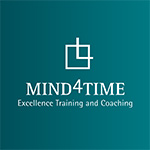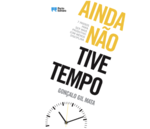Los Antiguos, PATAGONIA
Up until now, we've seen 2 types of elements in the system: Collectors and Action Repository.
The first - Collectors - is intended to hold new inputs for you while you keep focus. It's intended to prevent interruptions, pacing your productivity and optimizing focus. An email inbox without alerts, waiting for your attention, is a good example of a productive collector.
The second one - Action Repository - is the complete collection of pending opportunities, waiting to be selected for the next round of attention. A big long to-do list is an example. In today's working context, full of inputs, this to-do list is very dynamic, receiving new items all the time.
This third and final element - Guides - is what's in charge of telling you what to do next. Without this element, and because your to-do list is fed so quickly, you may loose direction, and start reacting to what's fresh and loud, instead of what's most valuable.
Guides work as a short list, implementing the best selection you can have from all the possible presented opportunities to add value. Your calendar, if trustworthy, is an example of a guide. The red marks or numbers on your to-do list can be too, if cleverly implemented.
Mr. Guide
If you were to talk with Mr.Guide, you might ask him this kind of questions: "Mr. Guide, I've finished. What next? What have you decided I'll do this afternoon? Can I go check my email, or is there still something else first? Are you sure I can dive completely in this issue without thinking about all the other pending stuff? Is this really the best bet? What would I have to achieve today, from all this long list, so I can leave by 6:00 with a feeling of accomplishment?"
Guides are what prevents the Robot from deciding himself what to do. You know already that if you let your Robot loose, he'll pick tasks by his own criteria: easy, fast, fun stuff. And that rarely optimizes your results. In fact, if you let the Robot choose, by the end of the day you may feel you've been very busy, but not necessarily productive. You need someone with a global picture to make the right choices, and then keep you on track with those. And that's precisely what Mr.Guide does!
In my next articles, I'll be sharing ideas on how to build clever guides. Until then, Try a TRICK!...





Guides allow me to tackle the most important jobs first, and don't waste time on trivial tasks.